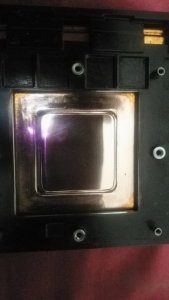erek
[H]F Junkie
- Joined
- Dec 19, 2005
- Messages
- 10,894
Courtesy of Jelly
""A contributing factor to my project was the knowledge that silicon temperature is a crucial factor that limits the turbo frequencies of Zen 2 processors and when I installed a second radiator without noticing any significant temperature differences from before, I started looking at alternatives solutions," Penrowe said.
Penrowe claims he did not have the time to test the temp results of his efforts and make a bunch of graphs, but teases at the end of the video that someone else now in possession of the CPU will be doing that for him. So sometime in the hopefully near future, we'll find out if it can in fact run without any thermal paste."
https://www.pcgamer.com/a-machinist-lapped-an-amd-ryzen-16-core-cpu-within-a-nanometer-of-its-life/
""A contributing factor to my project was the knowledge that silicon temperature is a crucial factor that limits the turbo frequencies of Zen 2 processors and when I installed a second radiator without noticing any significant temperature differences from before, I started looking at alternatives solutions," Penrowe said.
Penrowe claims he did not have the time to test the temp results of his efforts and make a bunch of graphs, but teases at the end of the video that someone else now in possession of the CPU will be doing that for him. So sometime in the hopefully near future, we'll find out if it can in fact run without any thermal paste."
https://www.pcgamer.com/a-machinist-lapped-an-amd-ryzen-16-core-cpu-within-a-nanometer-of-its-life/
![[H]ard|Forum](/styles/hardforum/xenforo/logo_dark.png)
